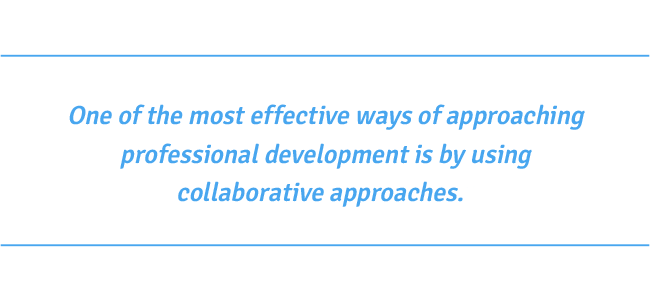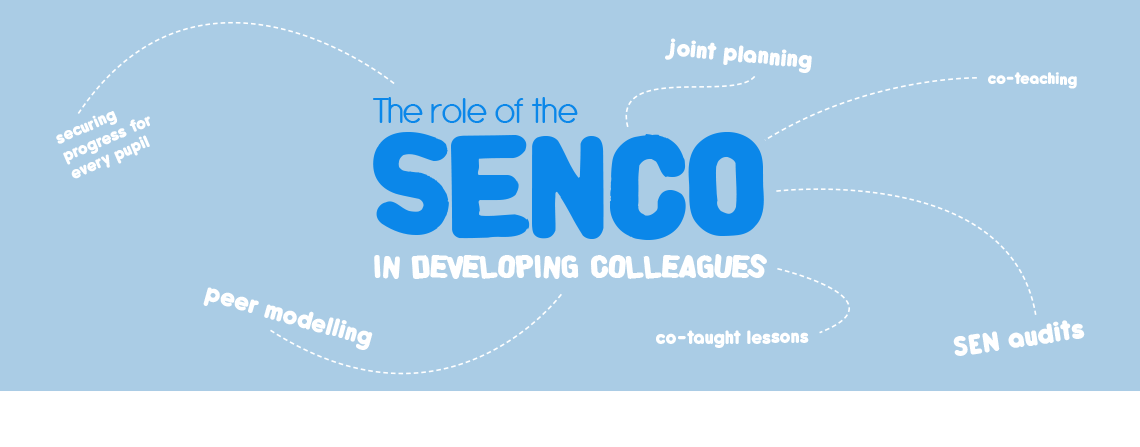Natalie Packer shares with Staffroom an extract from her book ‘The Perfect SENCO’ in which she provides guidance on developing the skills of colleagues to deliver inclusive practice in the classroom.
Every SENCO understands the importance of high-quality, inclusive teaching to secure the progress of all pupils, including those with special educational needs.
To ensure this happens successfully, the SENCO has a key role to play in facilitating good professional development opportunities for staff.
Where to start
Initially, you will need to identify the continuing professional development (CPD) needs of all staff in relation to SEN.
An SEN CPD audit can help you to do that (see bottom of page for an example).
You will need to have knowledge of the range of CPD opportunities available for staff and support individuals and how to access them. This will include supporting trainee teachers, newly qualified teachers (NQTs) and staff who are new to the school in understanding the school’s SEN policies and procedures, as well as providing general support to all on the use of effective strategies for meeting the needs of pupils with SEN.
One way to do this is to provide whole-school training for staff – for example, on high-quality, inclusive teaching. Whole-school or departmental training is often a time-efficient way to get a message across to a large number of staff.

However, research has shown that one of the most effective ways of approaching professional development is by using collaborative approaches, where individual members of staff are supported by their peers in a more direct and often targeted way, such as joint planning, co-teaching or peer modelling.
Joint planning
Spending time with teachers during their planning sessions will provide a good opportunity for joint discussions around specific lessons.
Colleagues can share ideas about:
- Identifying learning objectives/success criteria for lower-ability pupils.
- Providing opportunities for pupils to work on their individual targets.
- Using strategies to enable all pupils to access the lesson.
- Developing differentiated resources (e.g. visual prompts, keywords).
- Effectively deploying TAs.
Co-teaching
Co-teaching not only enables two teachers to plan together but also to jointly deliver and evaluate a lesson. Although the idea of regular co-teaching is an unaffordable luxury in many schools, it may be possible for the SENCO to teach alongside another colleague for a short series of lessons.
During a co-taught lesson there will need to be a clearly planned approach to the sharing of tasks and responsibilities, for example:
- Sharing whole-class teaching elements of the lesson.
- Carrying out guided group work with one or two different groups.
- Providing extra support and challenge for individual pupils with additional needs.
- Sharing opportunities for assessing pupils during the lesson.
Peer modelling
Where teachers may benefit from the opportunity to observe other colleagues’ practice, the SENCO might carry out demonstration lessons.
This provides an opportunity to focus on either generic or specific aspects of teaching practice, for example:
- Behaviour management techniques.
- Application of pedagogical approaches, such as the use of questioning to engage lower-ability learners.
- Effective communication with TAs.
Alternatively, the SENCO may choose to undertake coaching or mentoring. SENCOs are most likely to be involved in mentoring NQTs or other staff who have recently joined the school. Coaching may involve informal conversations to promote reflection on teaching practice or to support the development of more specific areas of SEN.
Both approaches can be useful for moving on an individual’s practice, but require the SENCO to have time (often a luxury!) and a range of skills, such as active listening, questioning, reflection, sensitivity, and often patience, in order to be really effective.
So what difference has the CPD made?
Following opportunities for staff to engage in SEN CPD, it is important that the SENCO follows this up by evaluating the difference it has made to practice, and ultimately to the outcomes of pupils with SEN.
Top tip – Online essentials
There are a range of ready-made materials available on the internet to help you develop training sessions, so you don’t have to start from scratch.
Take a look at Nasen’s A Whole-School Approach to Improving Access, Participation and Achievement toolkit or the DfE’s Inclusion Development Programme (IDP), both of which provide a range of resources to support staff with aspects of high-quality, inclusive teaching and address specific areas of need. SR
SEN CPD Audit
| Questions for staff
- Are you familiar with the whole-school aims/policy to meet the needs of pupils with SEN?
- Do you understand the systems and processes used for SEN?
- Do you feel confident in identifying pupils who may have special educational needs?
- Do you feel confident in your understanding of the range of pupil needs within your class?
- Are you confident in monitoring the progress of pupils with SEN?
- Are you confident of how well pupils with SEN should be achieving?
- Do you believe you provide reasonable adjustments to meet the needs of pupils with SEN?
- Do you use AfL effectively to increase the participation and engagement of pupils with SEN?
- Do you think that TAs are deployed effectively to ensure the support of pupils with SEN?
- Does the support you provide pupils with SEN improve their outcomes?
- What do you feel are your strengths in relation to supporting pupils with SEN?
- Is there anything that concerns you about supporting pupils with SEN?
- Are there areas of SEN which you would like further support with or additional CPD?


